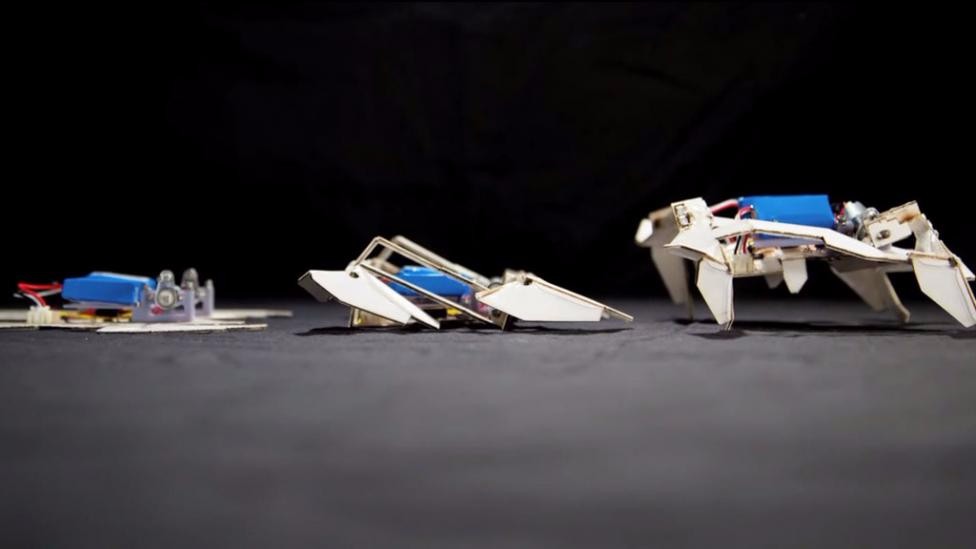paper robot able to transform and move
Is not an easy job to make a robot‘s ability to move freely, there are complex movements that are a challenge for engineers and there is much research and a lot of money behind as ASIMO robot built by Honda, this robot has behind him years of research and its designers have added it moves year after year, but there are other types of robots that can revolutionize the robotics industry and the cost is much less.
Engineers and designers of the Wyss Institute at Harvard have developed robots based on the ancient art of ORIGAMI and toys “Shrinky dinks” that contract when heated. The researchers argue that from a sheet of paper is possible to build a robot in a few hours, they were inspired by the ancient Japanese art called ORIGAMI because it allows the transformation of paper into complex structures and this eliminates the complicated assembly nuts and screws.
How does a robot paper is able to transform and move ?
Researchers began developing this technology with a flat sheet, added two motors, two batteries and a microcontroller which is what acts as the brain of the robot.
The blade that is manufactured is made of paper and Shrinky dinks ™, also known as polystyrene, and between these two materials is a flexible circuit. Also included hinges that are programmed to bend at specific angles. Each hinge is connected to the flexible printed circuit, this circuit produces heat with a command from the microcontroller. The heat activates the composite which is self folds into a series of steps.

When the hinges are cooled after about four minutes, the polystyrene hardens making that the paper robot becomes completely rigid when the fold is completed, the microcontroller instructs the robot to move and moves away dragging with a speed of about 160 meters per hour. The whole event spend approximately the amount of energy in a AA alkaline battery.
The current paper robot has a timer that gives a wait of about ten seconds after the batteries are installed, to start folding. The researchers can modify and replace the timer so that the robot is activated by some environmental variable such as temperature or pressure.
One of the main challenges in the process was to make that paper robots not burn before it is folded correctly, since these robots in their folding process consume 10 times the power of a light bulb.
Finally I leave you with the video of the interview and the sample robot unfolding.
If you enjoyed this article, please share it.
